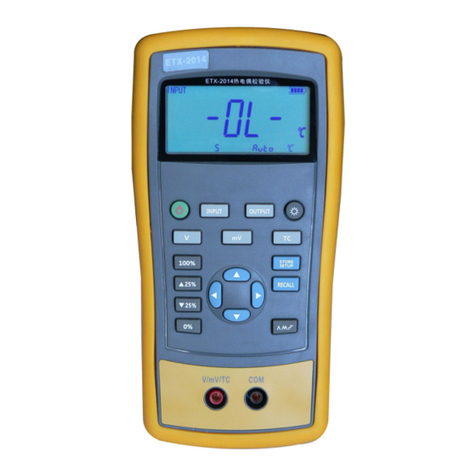
Contents
1 Basic Introduction........................................................................................................... 1
1.1 Function............................................................................................................... 1
1.2 Summary of Source and Measure Functions....................................................... 1
1.3 Terminal Description............................................................................................2
1.4 Key Description................................................................................................... 3
1.5 Display Screen..................................................................................................... 4
2 Basic Operation...............................................................................................................5
2.1 Measure and Source............................................................................................. 5
2.2 Shutdown Mode................................................................................................... 7
2.3 Backlight Brightness Adjustment.........................................................................8
3 Function Usage............................................................................................................... 9
3.1 DC V Measurement..............................................................................................9
3.2 DC mV Measurement........................................................................................ 10
3.3 Resistance Measurement....................................................................................10
3.4 DC mV Output................................................................................................... 11
3.5 Resistance Output.............................................................................................. 12
4 Temperature Measurement............................................................................................13
4.1 Using Thermocouple (TC)................................................................................. 13
4.2 Using Resistance Thermometer Detector (RTD)............................................... 15
5 Simulation of temperature sensor................................................................................. 18
5.1 Simulating Thermocouples................................................................................ 18
5.2 Application of Resistance Temperature Detector (RTD)................................... 19
6 Advanced Application................................................................................................... 21
6.1 Setting 0 % and 100 % output parameters......................................................... 21
6.2 Auto Ramping the Output.................................................................................. 22
6.3 Factory Reset......................................................................................................22
7 Power............................................................................................................................ 23
7.1 Charge................................................................................................................ 23
8 Specifications................................................................................................................ 24
8.1 DC Voltage Measurement.................................................................................. 24

































